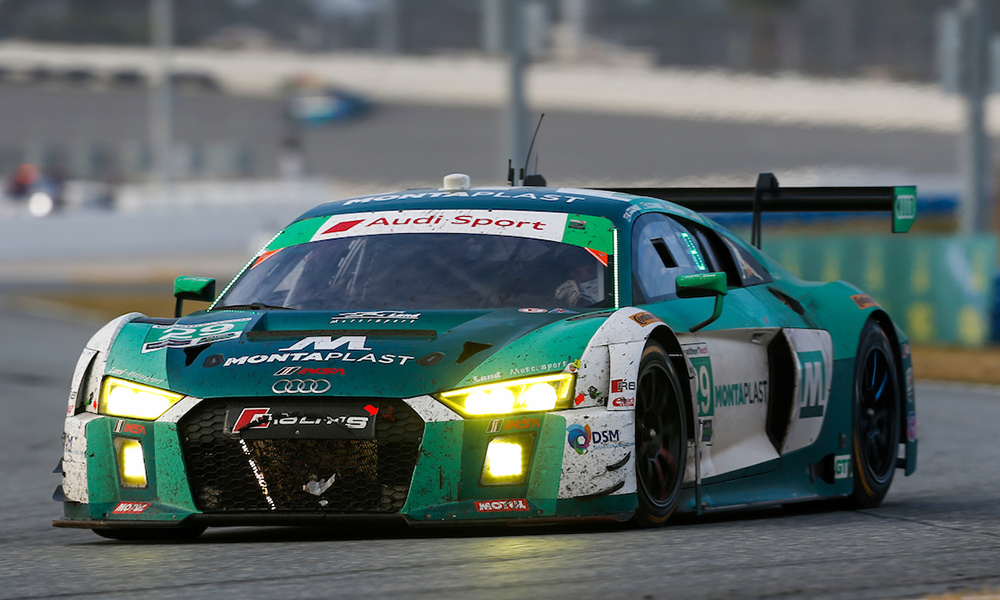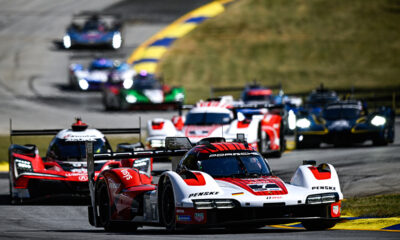
Photo: Jake Galstad/IMSA
Montaplast by Land Motorsport has explained the method it utilized to have quicker refueling stops than expected by IMSA, which resulted in a mid-race Balance of Performance penalty in last month’s Rolex 24 at Daytona.
The German squad, which had nearly a two-lap lead in GT Daytona at the time, was hit with a five-minute stop-and-hold penalty for having a “consistent and beneficial” advantage in refueling during the race.
The penalty relegated the No. 29 Audi R8 LMS of Christopher Mies, Jeffrey Schmidt and Kelvin and Sheldon van der Linde to an eventual seventh place finish in class.
In a statement issued by the team, it’s been revealed Land implemented “changes to the contents” inside the Audi’s fuel cell for increased fuel flow, on average between five to eight seconds per pit stop.
The area, according to the team, is not currently homologated or specifically regulated in the IMSA rulebook.
“These changes allowed the fuel to flow into the cell at a faster rate, shortening the time the team spent in pit lane during pit stops,” a team statement read.
The car and refueling rig both passed post-race technical inspection, which saw IMSA officials spend three hours “scrutinizing” the fueling equipment and fuel cell, which were deemed to be fully within the series’ regulations.
Per IMSA rules, the car was penalized because of “displaying a level of performance above… the expected result.”
However, the team has argued that an average refueling time was not communicated to them beforehand.
“IMSA has stated that moving forward, they will amend the rules to give teams a specific number that will be help define ‘the expected result’ for fueling times,” Land’s statement said.
The explanation comes in the wake of Audi Sport customer racing boss Chris Reinke suggesting the implementation of a minimum refueling time for all GTD competitors in the class.
Land’s in-race BoP penalty was the first of its kind in the modern era of IMSA competition.
























